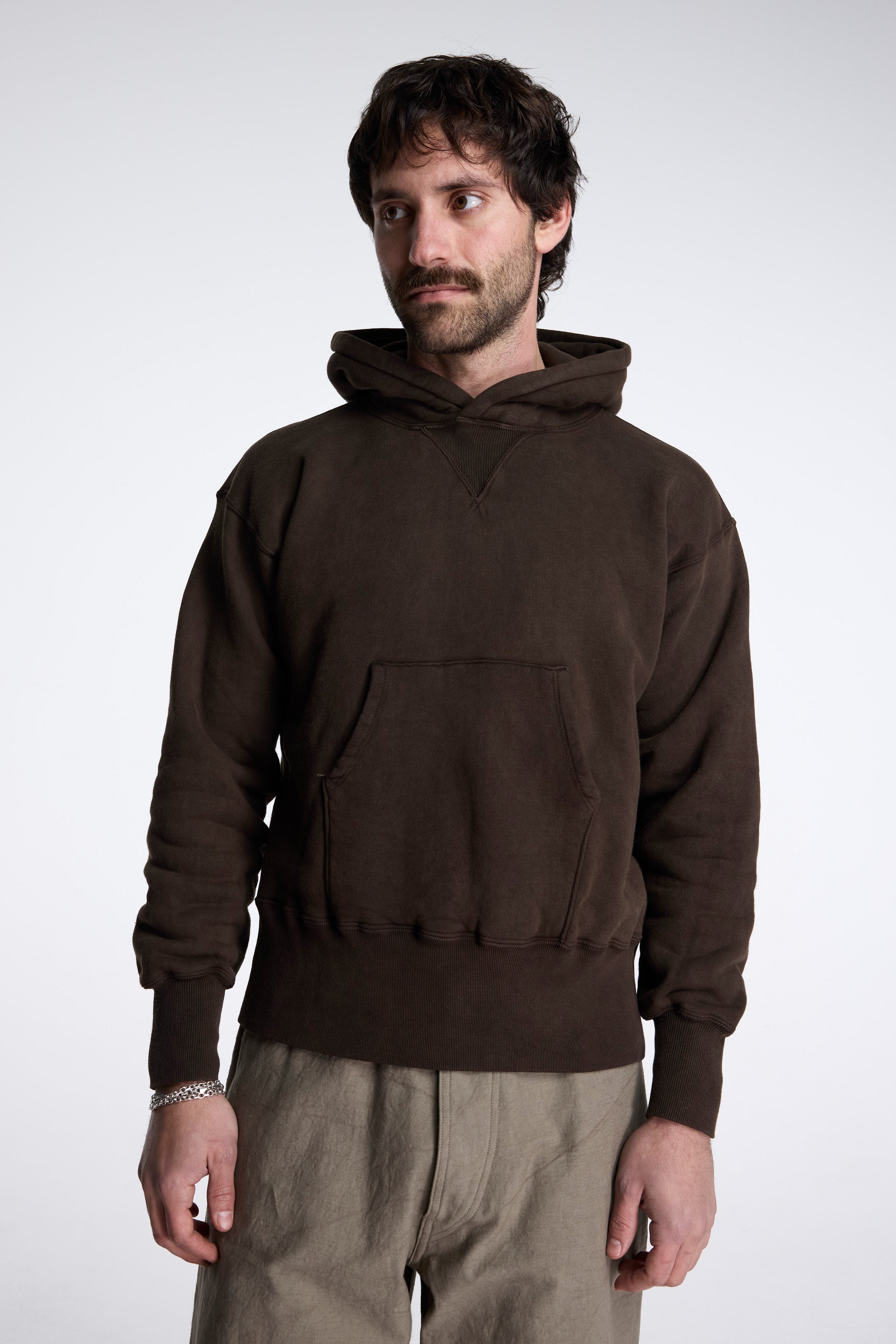
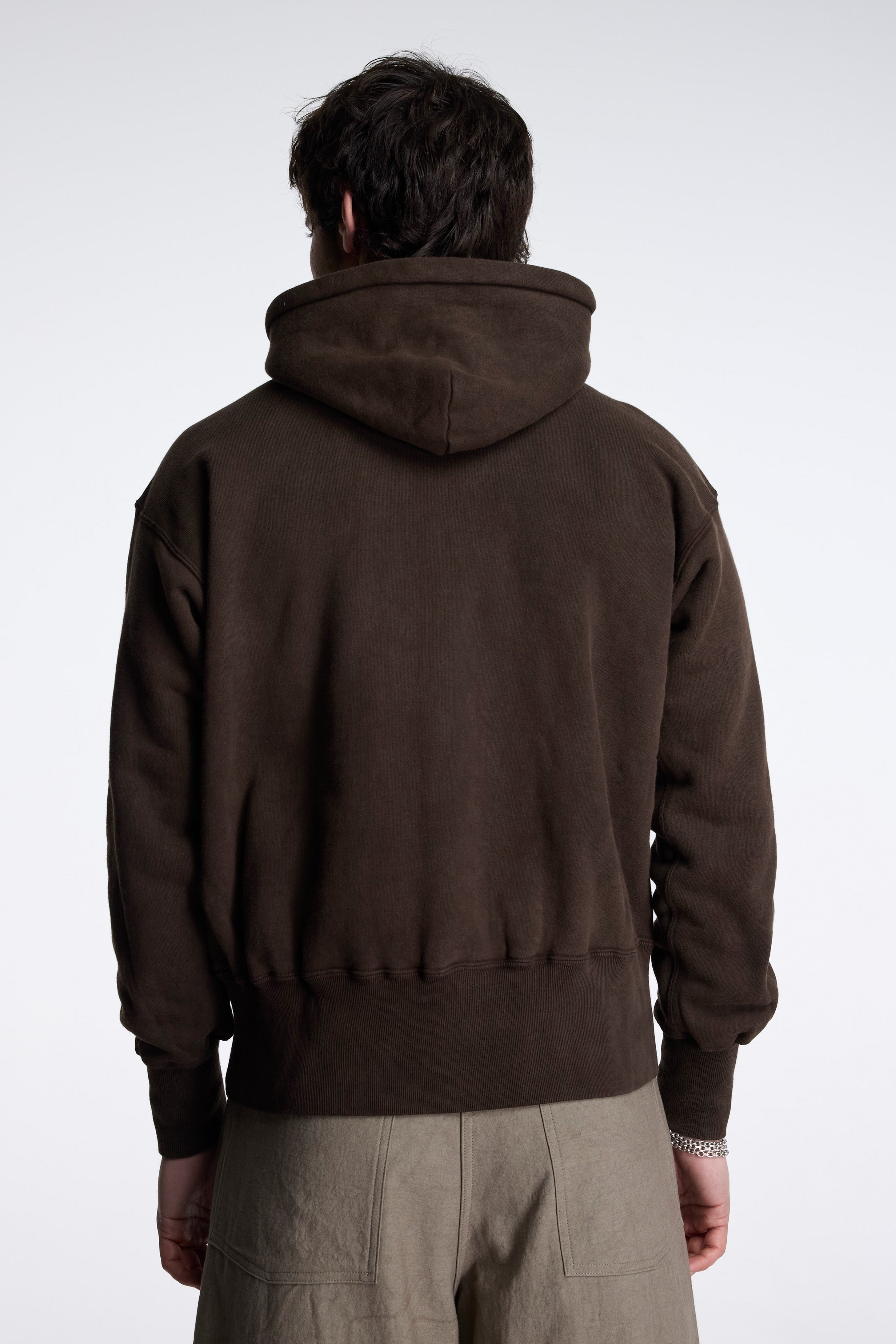
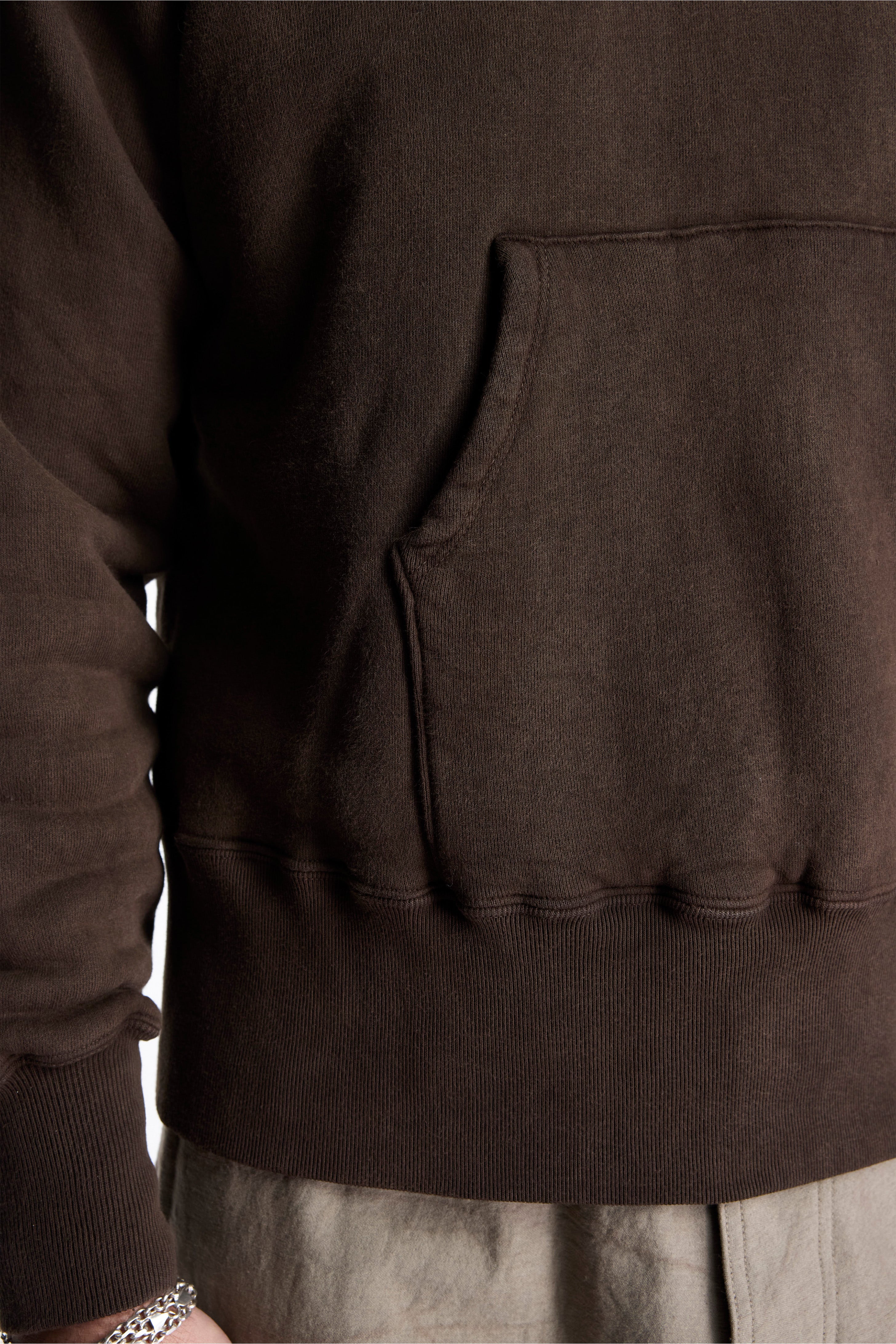
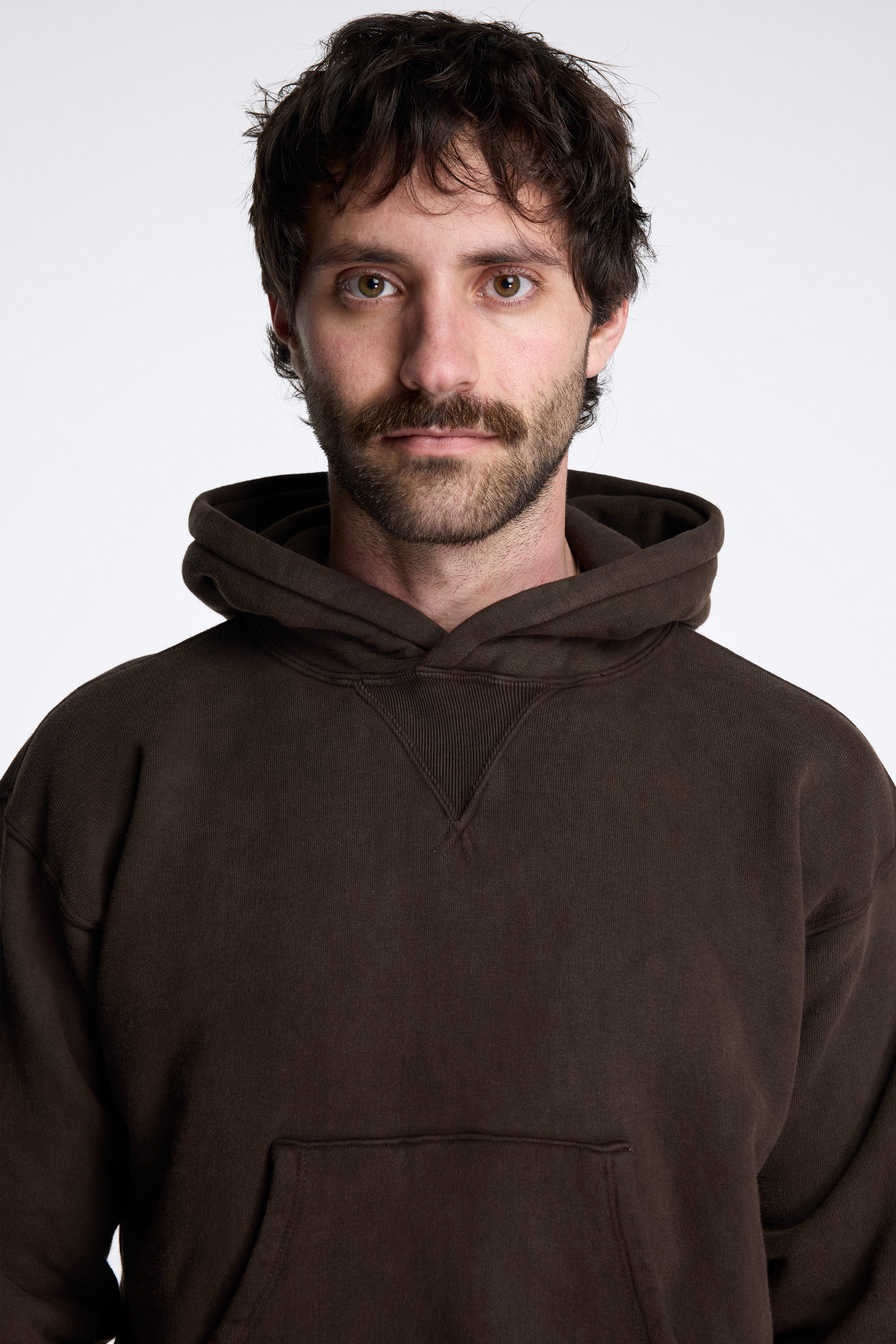
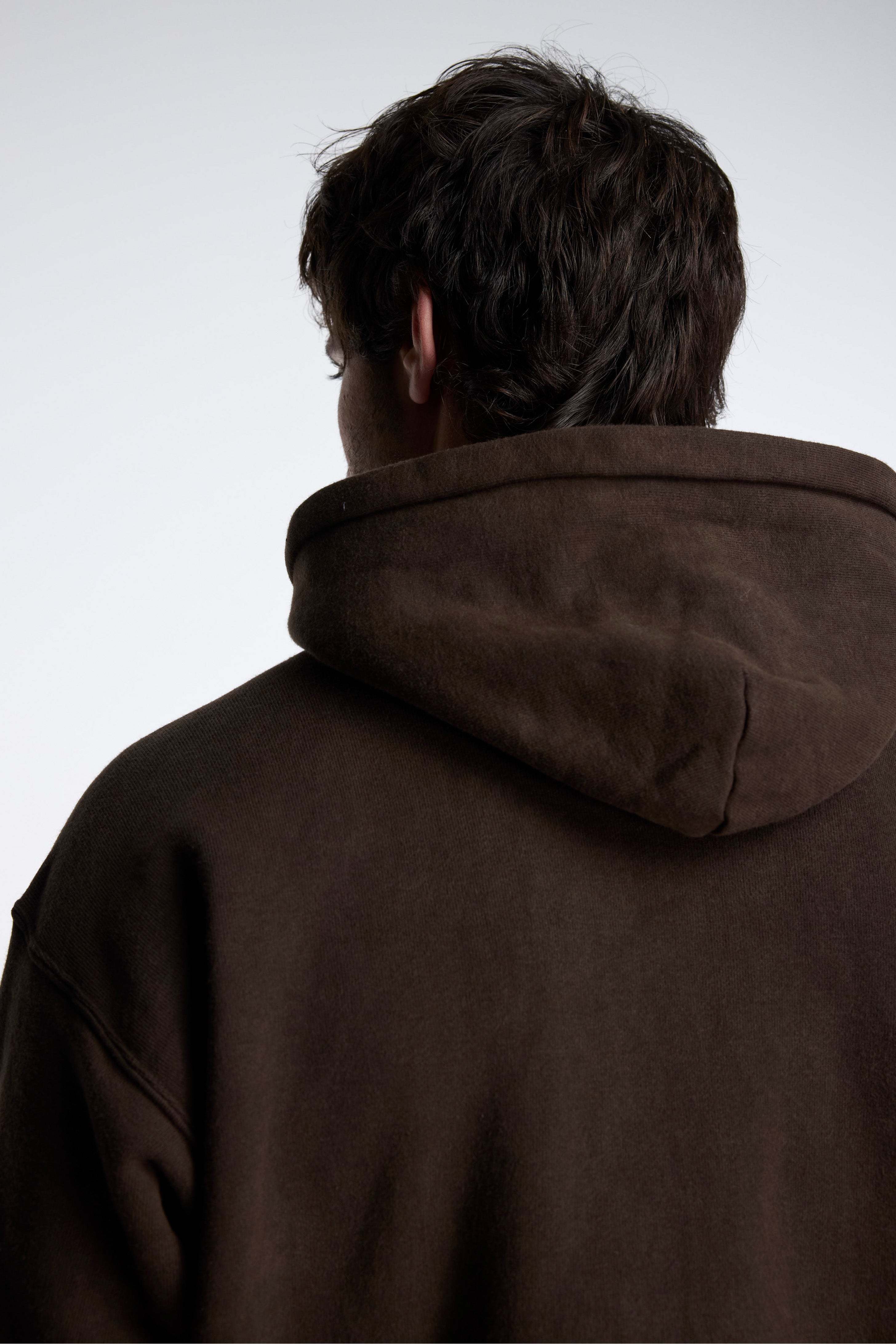
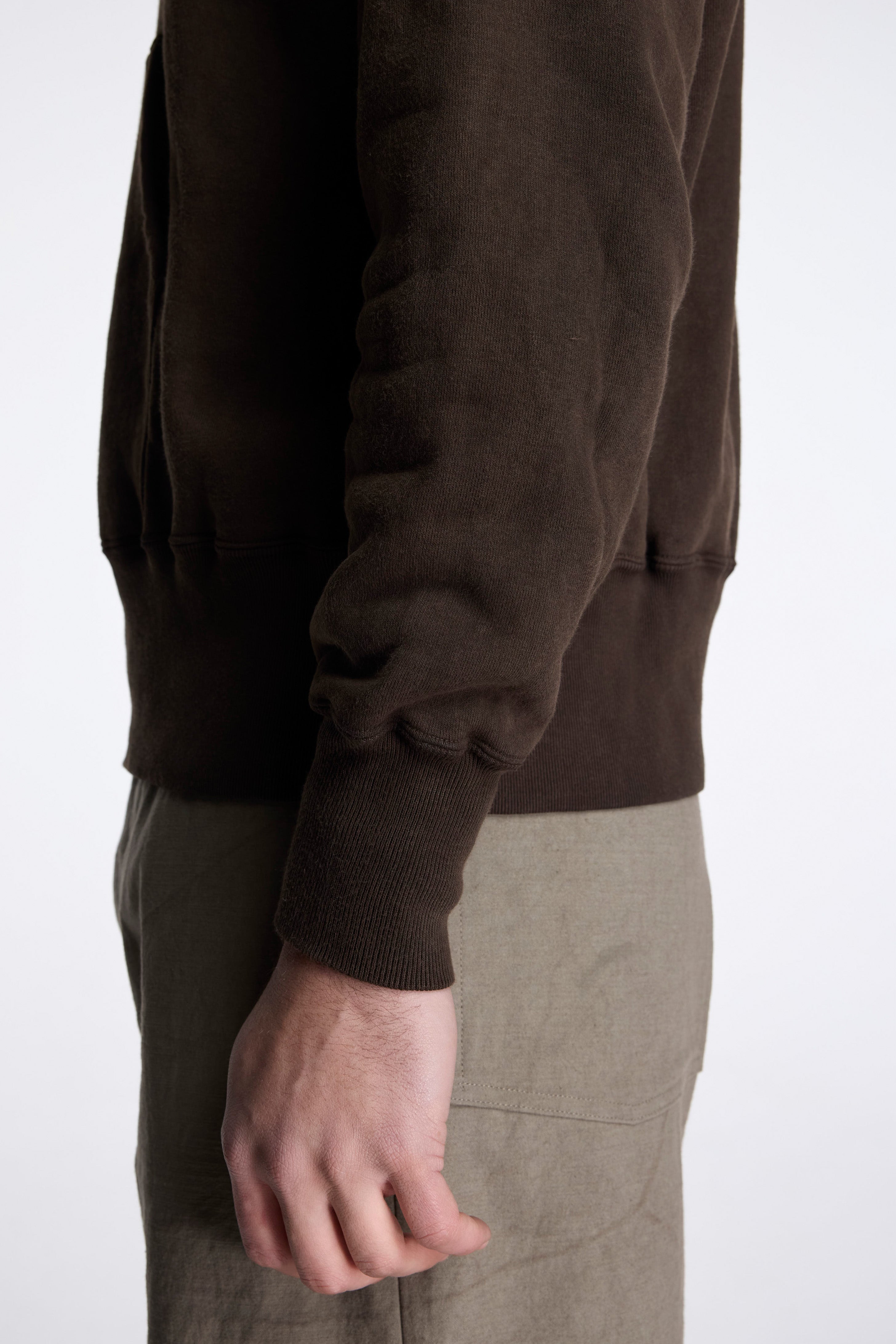
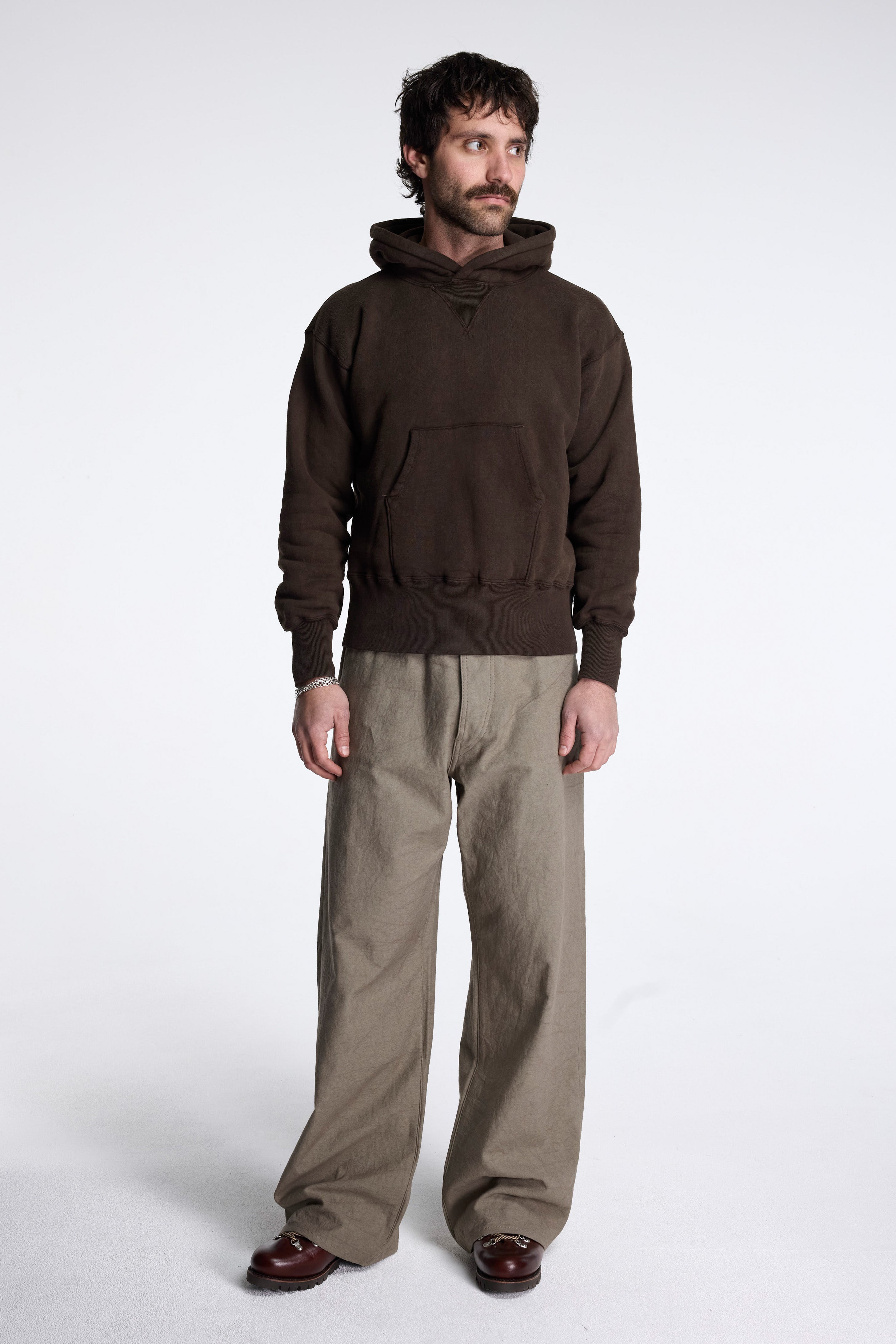
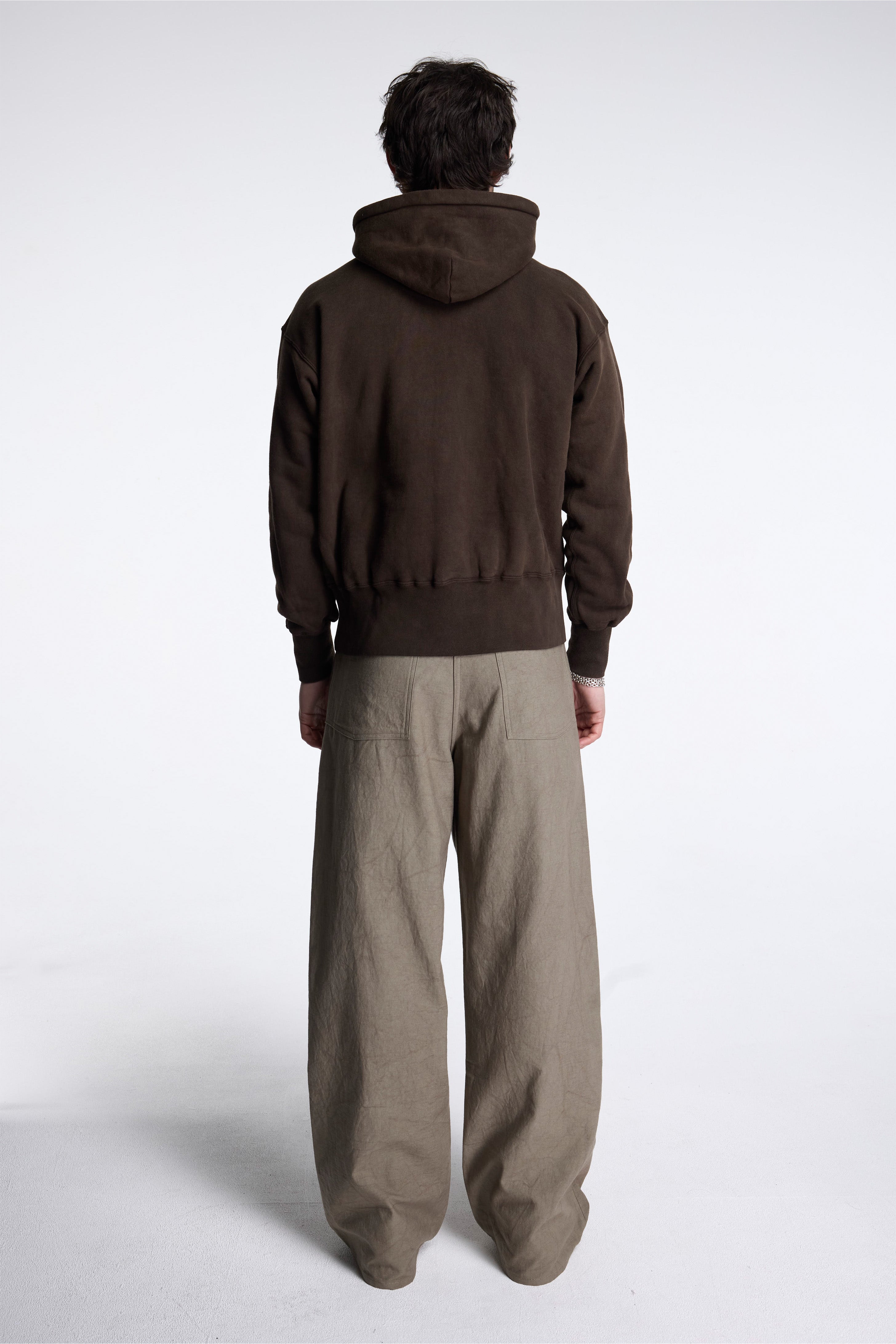
LOT.606 Hooded Sweat Shirt Mud Dyed Brown
Pickup available at Gertrude St
Usually ready in 1 hour

LOT.606 Hooded Sweat Shirt Mud Dyed Brown
MUD DYED BROWN / 38
Gertrude St
200 Gertrude Street
Fitzroy VIC 3065
Australia
Gilbert St
2D Gilbert Street
Torquay VIC 3228
Australia
A nod to the makeshift ingenuity of vintage American sportswear, the LOT.606 Hooded Sweatshirt by T.T reimagines the “retrofit hoodie”, a term used to describe early sweatshirts that had hoods patched on post-production. This updated version honours that spirit of utility while elevating every element of construction. Made from tubular jersey cotton knit on a rare Taisho-era hanging knitting machine in Wakayama, the fabric has a dry, airy hand feel and organic irregularity that can only be achieved through time-intensive methods. Each piece in Mud Dyed Brown is individually dyed by hand using traditional mud dyeing techniques from Amami Ōshima, producing subtle variations and singular depth in tone. The result is a hoodie that feels like a rediscovered relic. Built to last, shaped by hand, and completely unique.
- Cropped, Relaxed fit
- American cotton for a dry texture and moderate unevenness
- Individually dyed using traditional Amami Ōshima dorozome (mud dye) technique
- One of a kind, with natural variation in tone
- 100% Cotton
- Made in Japan
- Ethan is 182cm and is wearing a size 40
Please contact us here should you have any inquiries about the product.
T.T, a unisex brand based in New York and Kyoto, was founded by Taiga Takahashi, whose education fused Japanese culture with Western ideas. After graduating from Central Saint Martins in 2017, he launched his brand, centred on the concept of "resurrecting relics of the past to unearth artifacts of the future." Takahashi, an avid collector of vintage garments from the pre-mass production era, emphasises the historical value of craftsmanship. Through an archaeological lens, he reinterprets time-worn fabrics and sewing details, creating garments meant to endure for centuries, incorporating endangered traditional Japanese techniques and collaborating with skilled artisans.
SHIPPING
|
Country | Carrier |
Standard |
Express |
Return Only |
Exchange |
|
Australia | Australia Post |
$10 (>$200 Free*) |
$20 (>$350 Free*) |
$15 |
$30 |
|
New Zealand | DHL Express |
N/A |
AUD30 (>$350 Free*) |
AUD30 |
AUD60 |
|
Rest of World | DHL Express |
N/A |
AUD50 |
AUD50 |
AUD100 |
* Free shipping does not apply to sale items.
Processing time.
We aim for same day processing of all orders placed by 10am on business days.*
Orders placed after 10am weekdays, on weekends or public holidays will be processed the following business day.
* International orders with items from multiple locations will be consolidated before shipping adding 1-2 business days to processing time.
RETURNS
Online Returns
- Eligible items may be returned for exchange or store credit within 14 days of purchase.
- Returned products must be unused, unwashed, in “as new” condition with all original tags, labelling and packaging intact. Returns are accepted at the discretion of our staff.
- Socks, underwear and earrings may not be returned for hygiene reasons.
Sale Returns
- Final Sale items and sale items sold with additional promotional discount codes are not eligible for return or exchange unless faulty as determined by our warranties team.
- Sale items that are not on final sale can be returned for exchange or store credit within 14 days of purchase.
Return shipping
|
|
Australia |
New Zealand |
Rest of World |
|
Return Only |
$15 |
AUD30 |
AUD50 |
|
Exchange |
$30 |
AUD60 |
AUD100 |
- Charges will be deducted from eventual store credit or invoiced before shipment of exchanged goods.
Click here for our full returns policy.
Choose options









